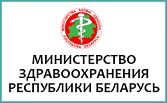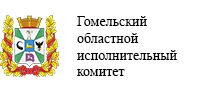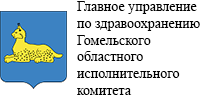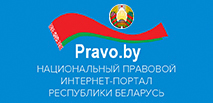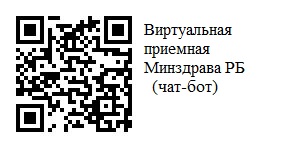New methods to increase the effectiveness of chemotherapy
The pharmacological market for chemotherapeutic agents is growing every year, new generations of antitumor drugs are being developed, highly selective inhibitors of signal transduction and angiogenesis appear, which undoubtedly should have increased the life expectancy of cancer patients. Unfortunately, this does not happen, and if there is, then to an insignificant extent.
Some progress has now been made with the development of monoclonal antibodies (bevacizumab, cetuximab and trastuzumab) that, in combination with chemotherapy, extend the lives of patients with disseminated colorectal cancer and increase the overall survival of patients with metastatic breast cancer (Her2 / neu-positive).
In addition, to date, inhibitors of signal transduction (gefitinib, erlotinib, imatinib mesilate, sorafenib, sunitinib, etc.) are actively studied, new modes of cytostatic administration (metronome therapy, dose-dense therapy), which probably will increase the overall Survival of patients with advanced cancer.
Among the reasons for the low effectiveness of drug treatment of disseminated solid tumors, we can distinguish:
- Features of tumor growth kinetics;
- Existing and acquired drug resistance of cells;
- Properties of the physiological microenvironment of tumor cells;
- Repopulation of the neoplasm.
Kinetics of tumor growth
The most famous concepts of the growth kinetics of malignant growths are exponential growth models, Gompertz, Speer-Retsky
For the first time Skipper-Schabel-Wilcox formulated the hypothesis that when a certain cytostatic regimen is prescribed, the fraction of cell death of exponentially growing tumors characterized by a homogeneous sensitivity to cytostatics is always constant (log-kill), regardless of the initial volume of the cell population.
Thus, for many drugs, the effect (the number of dead cells) depends on the dose. However, in the clinical practice of treatment of disseminated solid tumors, this hypothesis does not look so optimistic, since recurrences of the disease are often found. This is probably due to the assumption of exponential growth of all malignant neoplasms, as well as homogeneous sensitivity to cytostatics of tumor cells and recognition of absolute drug resistance.
On the other hand, now the Norton-Simon model, based on the Gompertz kinetics, remains popular. Based on clinical and laboratory data, the authors improved the Skipper-Schabel model. They suggested that the fraction of deaths when injected with the drug is non-log-kill and depends on the phase of the cell cycle.
The effectiveness of many drugs depends on the rate of growth in the existing tumor, i.e. The higher the cytoreduction, the greater the rate of cell growth, and vice versa. Gompertz's kinetics underlies the development of the malignant process: when the tumor size in the plateau phase, growth slows down, and the tumor becomes resistant to cytostatics, with a decrease in size, growth resumes and it quickly reaches its former volume.
Consequently, using the standard approach to cure a patient of a neoplasm that changes its volume according to the Gompertz kinetics, it is practically impossible.
Existing and acquired drug resistance of cells
According to the literature, in 99% the low effectiveness of chemotherapy is the result of existing or acquired drug resistance of tumor cells, which is based on genome instability and heterogeneity of tumor cells, the presence of drug resistance genes (MDR genes) and certain protective molecules (carrier proteins, Enzymes)].
Physiological microenvironment of tumor cells
The physiological microenvironment of the tumor is its stroma. It includes collagen fibers, connective tissue cells, immune system cells, chemokines, cytokines, and vessels. They form an extracellular matrix and define intercellular interactions, intercytial fluid pressure, rate and amount of tissue penetration of the drug, drug distribution in the tumor, drug metabolism.
Repopulation of the neoplasm
Currently, at the base of treatment of patients with disseminated malignant tumors lies the empirical choice of the drug and the titration of the total dose of the drug, i.e. The appointment of a cytotoxic at certain time intervals, depending on its hematological toxicity. On average, this interval is 3-4 weeks.
This does not take into account the properties of tumor cells, which in the interval between cycles of chemotherapy are able to restore their volume, i.e. Regenerate (repopulate). In experimental studies, an increase in the proliferative activity of tumor cells after the administration of chemotherapy compared with the control group was noted.
At present, the following mechanisms underlying the increase in proliferative activity are known:
- Physiological modification of tumor cells
- Achieving the fission rate of the corresponding intact volume of tumor cells
- Increased nutrition of surviving clonogenic cells due to redistribution of blood flow in the tumor
- Stimulation of residual tumor cells by circulating growth factors
- Modification of "dormant" tumor cells into clonogenic cells;
- The presence of potentially lethal damage (Hanh, 1973).
If we assume that there is no increase in the rate of repopulation of the neoplasm after the administration of cytostatics, then the treatment lasted as long as possible without progression of the disease and death of the patient from malignant neoplasm.
Accordingly, it is advisable to influence on:
1. Processes of proliferation and differentiation in tumor cells
- Tyrosine kinase inhibitors;
- dose-dense therapy;
2. Microenvironment of the tumor
- inhibitors of angiogenesis;
- metronome therapy;
- drugs affecting the stroma of the tumor;
3. Combined effects on the tumor and its microenvironment
- "Chemo-Switch" regimen, which includes consecutive administration of chemotherapy in the maximum tolerated doses followed by metronome therapy in combination with inhibitors of signal transduction and angiogenesis.
Tyrosine kinase inhibitors
Signal transmission in eukaryotic cells is carried out by means of special proteins (kinases).
To date, there are more than 90 genes encoding these molecules. At the same time, 58 of them are responsible for 20 families of transmembrane kinases, and 32 for 10 families of non-receptor cytoplasmic proteins.
In normal cells, their activity is very clearly regulated. Tumor transformation leads to disruption of kinase signals due to various genetic damage, determining uncontrolled proliferation and dedifferentiation.
The pharmacological effect on the altered signaling pathway leads in a number of cases to the restoration of the regulation of fission in the cell. In this case, drugs can act on one signal path, as well as several.
Drugs affecting one signal pathway
Erlotinib (OSI-774) and gefitinib (ZD1839) -reduces the interaction of ATP with the tyrosine kinase domain of the epidermal growth factor receptor (EGFR-1).
This type of receptor is expressed in a lung tumor. The objective response in patients with non-small cell lung cancer, who underwent therapy with these drugs, was only 9-18%.
In this erlotinib statistically significantly increased disease-free and overall survival and gefitinib no. A detailed analysis of subgroups of patients in these studies revealed factors that affect the efficacy of EGFR-1 inhibitors.
These include:
- Absence of smoking in the anamnesis,
- female,
- The Mongoloid race,
- Adenocarcinoma,
- Presence of a mutation in 18 exon,
- Bronchioloalveolar carcinoma.
In 2003 gefitinib was approved by the FDA as the third line of therapy for patients with locally advanced and disseminated non-small cell lung cancer (NSCLC) (platinum and docetaxel-resistant).
However, the ISEL study (2005) led to a revision of this position.
In 2004, erlotinib was approved for FDA use in patients with NSCLC as a second-line therapy. Given the overexpression of the epidermal growth factor receptor, clinical studies of the effectiveness of EGFR-1 inhibitors in various solid neoplasms (esophageal cancer, pancreatic cancer, colon cancer, head and neck tumors, stomach cancer, breast cancer, prostate cancer, bladder cancer , Ovarian cancer).
The combination of gemcitabine and erlotinib is standard in North America as the first line of therapy for disseminated pancreatic cancer.
Lapatinib (GW572016) is a reversible inhibitor of EGFR-1 and Her2 / neu. Currently, Phase II-III is being used for NSCLC, esophageal cancer, ovarian cancer, head and neck tumors, prostate cancer, glioblastoma.
Clinical studies of phases II and III demonstrated the efficacy of this drug in patients with locally advanced and metastatic breast cancer, as well as in the presence of metastases in the brain.
Interim analysis of the combination capecitabine and lapatinib versus capecitabine mono-mode demonstrated an increase in the time to progression of the disease by 50% when using the combined regimen.
Imatinib mesylate (STI571) inhibits tyrosine kinase type 3 (ABL, c-KIT, PDGFR).
In one tumor, the drug inhibits one signaling cascade.
The recommended therapeutic dose is 400 mg / day.
Demonstrated efficacy in patients with chronic myeloid leukemia (complete clinical-
Hematological regression in 95%, cytogenetic regression in 60%), gastrointestinal neoplasms (53.7% objective response + 27.9% stabilization for more than 6 months), dermatofibrosarcoma-protuberance (99% objective response).
The effectiveness of imatinib mesylate is currently evaluated in breast cancer, c-KIT-positive germ cell tumors, thyroid cancer, melanoma, prostate cancer
Glands, kidney cancer, small cell lung cancer, ovarian cancer.
Drugs affecting several signaling pathways
Sunitinib (SU11248) is a multitarget tyrosine kinase receptor inhibitor
VEGFR1, VEGFR2, PDGFR, c-KIT, FLT3, CSF-1R, RET, i.e. Has both anti-tumor and anti-angiogenic activity.
In the Phase I study, a dose response of 30 to 75 mg daily was assessed.
The optimal use of this drug is 50 mg / day for 4 weeks, followed by a break of 2 weeks.
In the Phase II study with disseminated kidney cancer, an increase in the time to progression of the disease to 8.7 months was revealed with this drug compared with the placebo group - 2.5 months.
In a phase III study comparing the efficacy of sunitinib and interferon as a first-line therapy in patients with disseminated renal cancer, the median time to progression was 11 months and 5 months, respectively.
An objective response was registered in 31% of the tyrosine kinase inhibitor group and 6% in the interferon group.
The effectiveness of sunitinib has also been demonstrated in patients with gastrointestinal stromal tumors (GIST), resistant to imatinib mesylate therapy.
Sunitinib was approved by the FDA for the treatment of patients with GIST and advanced kidney cancer.
Sorafenib (BAY43-9006) - inhibitor of tyrosine kinase receptors VEGFR2, VEGFR3, FLT3, PDGFR-b, FGFR1, KIT, RET and serine-threonine kinases of the receptors B-raf, Raf-1 / C-raf.
The recommended dose for clinical use is 400 mg / 2 r / day.
Sorafenib was approved by the FDA for the treatment of patients with disseminated kidney cancer. Currently, phase II studies are under way with various solid neoplasms (NSCLC, head and neck tumors, melanoma, hepatocellular carcinoma, prostate cancer, pancreatic cancer, ovarian cancer).
At present, the combination of this agent with bevacizumab is continuing with disseminated breast cancer.
Vitalanib (PTK787) is a multivalent tyrosine kinase inhibitor VEGFR1, VEGFR2, VEGFR3, PDGFR, c-kit, c-Fms.
2 studies were conducted for disseminated colon cancer - CONFIRM-1
(First line of therapy in combination with FOLFOX-4) and CONFIRM-2 (second line in combination with FOLFOX-4).
In the first line of therapy, there was no significant difference in time to progression and overall survival compared with chemotherapy alone.
For the second line there was an increase in the time to progression of the disease when using the combined regime from 4.1 months to 5.5 months.
The overall survival was not different (11.8 and 12.1 months, respectively).
As a monotherapy, the drug is effective in patients with GIST, resistant to imatinib mesylate.
In patients with NSCLC in the second line of therapy, 2% showed partial regression of the tumor, and 56% - stabilization.
As a first-line therapy, the drug demonstrated efficacy in malignant mesothelioma (objective response 11%, time to progression 4.1 months, median overall survival 10 months). With breast cancer is currently in the preclinical test.
Aksitinib (AG-013736) is a potential inhibitor of tyrosine kinases VEGFR, PDGFR, KIT.
In patients with disseminated cytokine-resistant kidney cancer
Demonstrated efficacy in mono mode - 21 patients out of 52 had partial regression of the disease. Currently, this drug is being studied for advanced thyroid cancer, pancreatic cancer, NSCLC, breast cancer.
Trastuzumab (Herceptin) blocking the Her-2 / neu receptor, also belonging to the family of receptors of epidermal growth factor II type.
It is known that the Her-2 / neu receptor is present in normal human breast tissue - an average of 20 000-50 000 receptors on the cell surface, but their number increases to 1,000,000 or more on the surface of cancer cells.
A similar phenomenon occurs in adenocarcinoma of the stomach, lung cancer and breast cancer in about 20-25% of cases.
The increased density of Her-2 / neu receptors induces ligand-induced receptor activation, which initiates mitosis.
Hyperexpression of the Her-2 / neu receptor in the primary tumor is usually accompanied by a high probability of regional metastases and low levels of hormones.
There is evidence that overexpression is more common in protocol than in lobular cancer, and is rarely seen in breast cancer in men and in medullary cancers. It is also known that overexpression is characteristic of Paget's disease, an inflammatory form of breast cancer. Numerous clinical studies have shown the importance of overexpression of the Her-2 / neu receptor as an informative indicator of the unfavorable prognosis of the course of the malignant process.
The use of herceptin in patients with breast cancer, resistant to standard therapy, allowed to register an objective therapeutic effect in 21% of cases
However, the drug proved to be more effective in combination with chemotherapy. With the combination of herceptin and docetaxel in comparison with monotherapy with docetaxel, the objective effect rate was 61% and 55%, and the time to progression was 10.6 and 6.1 months, respectively.
Effects on the microenvironment in tumors and inhibitors of angiogenesis
Currently, various types of medicines are developing, affecting both the regulation points of angiogenesis in the tumor, and, directly, on the vessels.
Among them are monoclonal antibodies, tyrosine kinase inhibitors, soluble receptors, cytotoxic drugs in certain doses, and many others.
COX-2 Inhibitors
Cyclooxygenase -2 plays a major role in the progression of cancer of various localizations.
Under hypoxic conditions, overexpression of this enzyme was noted, which leads to an increase in the formation of prostaglandin 2 (PG2) from arachidonic acid.
This, in turn, contributes to the development of the hypoxic factor (HIP-1-alpha), which binds to the carriers of aromatic hydrocarbons (Arnt), activating the transcription of VEGF.
To date, preclinical and clinical studies of the use of cyclooxygenase-2 inhibitors have been conducted in disseminated solid neoplasms.
When using a combination of irinotecan, capecitabine, celecoxib in patients with metastatic colorectal cancer, partial regression was achieved in 9 of 23, and stabilization in 10 patients.
Vascular-targeting agents
An independent class of anti-angiogenic drugs, which is at the stage of study. The effect develops a few hours after application. These drugs selectively affect endothelial cells in the vessels of the tumor. Among them, the most actively studied inhibitor of microtubules ZD6126, combretastatin A-4 phosphate, AGM 1470.
Endogenous inhibitors of angiogenesis
Neovastat is an inhibitor of VEGFR1 and metalloproteinases MMP-2, -9, 12. The dose of the drug is studied in the range of 60-240 ml / day. In patients with disseminated renal carcinoma, 2 objective responses were recorded in the 2nd phase of the study (with a dose of 240 ml / day). The median overall survival was 16.3 months.
Bevacizumab (avastin) is a humanized monoclonal antibody with a targeted effect on VEGF.
In animal experiments it has been shown that in addition to blocking the formation of new vessels, anti-VEGF therapy induces apoptosis of endothelial cells, reduces the diameter, density and permeability of existing blood vessels, which leads to the death of tumor cells.
The process of blocking neoangiogenesis and reverse development of tumor-typical immature vessels creates conditions for lowering the vascular permeability, leading to a reduction in interstitial pressure in the tumor, which makes it more accessible for chemotherapeutic drugs.
In addition, a decrease in interstitial pressure helps to reduce foci of hypoxia in the tumor, which increases its sensitivity to radiation therapy.
Anti-VEGF therapy can enhance the apoptosis of tumor cells carrying on their surface receptors of vascular endothelial growth factor and playing the role of proliferation factors. Finally, anti-VEGF therapy has a targeted effect on the effects of the immune system, since it is established that VEGF enhances the adhesion of natural killers to the microvasculature of the tumor and suppresses the maturation of dendritic cells, helping the tumor to avoid immune surveillance.
Currently, the drug is used in combination with cytostatics in the treatment of breast cancer, colorectal cancer, glioblastoma and non-small cell lung cancer (NSCLC).
Drugs activated by hypoxia
This approach of therapy is based on the ability of some drugs to transform into active forms in conditions of hypoxia.
These include - Mitomycin C, E09, SR 4233.
The clinic uses only mitomycin.
Dose-dense therapy
The idea of prescribing chemotherapy at short intervals is to try to slow the repopulation of tumor cells u between cycles of therapy.
This increases the cumulative cell-kill and, accordingly, the therapeutic effects.
The effectiveness of dose-dense therapy is shown in the CALGB 9741 study, in which, irrespective of
Sequential or parallel use of chemotherapy drugs, a statistically significant efficacy of the 2-week regimen compared with the standard 3-week interval was noted: disease-free survival was 85% and 81% (p = 0.01), and 92% and 90% (p = 0.013) , Respectively
In this case, shorter breaks between the cycles of therapy do not increase the toxicity of the treatment.
To date, some randomized trials have shown the advantage of a dose-dense regimen in the form of an increase in disease-free and overall survival in small-cell lung cancer (an objective response was 63%), advanced colon cancer, urothelial cancer (56% objective response, 15 months overall survival) , Ovarian cancer (objective response 65.5%, time to progression 9 months, overall survival 18 months).
Metronomic therapy
Dose-dense concept includes metronome therapy, which is the administration of chemotherapy daily or several times a week, or weekly at low doses for a long time.
In this case, primarily anti-angiogenic, and not cytotoxic, effect of drugs is realized.
Of these known preparations used in metronomic regime: capecitabine, S-1, UFT,
Temozolomide, Vepeside, cyclophosphamide, methotrexate, interferon-alpha, mitomycin C, 5-fluorouracil, vincristine, vinblastine, doxorubicin, mitoxantrone, paclitaxel, tegafur, topotecan, metilmerkaptopurin-6, 9-amino-20 (S) -camptothecin.
The basis of the anti-angiogenic effect is as follows:
1. Direct action:
Suppression of circulating endothelial stem cells;
Antiproliferative effect on endothelial cells.
2. Indirect action:
increase the level of endogenous thrombospondin 1, which leads to apoptosis of CD36-positive endothelial cells, and reduces the mobilization of stem endothelial cells Efficiency metronomic chemotherapy regimen has been demonstrated in many preclinical studies that contributed to a Phase I and II clinical trials of the treatment of metastatic non-small cell lung cancer Ovaries, breast cancer, prostate cancer.
"Chemo-switch" mode
One way to overcome drug resistance is "chemo-switch" regimen.
Its essence lies in the standard applications of cytostatics in combination with the maximum tolerated doses followed by maintenance mode which involves the use of inhibitors for PDFGR destruction of pericytes, metronomic therapy and VEGFR inhibitors.
Thus, the main pathways of development of tumor cells-proliferation and neoangiogenesis-are blocked.
Unfortunately, to date, the results of clinical studies of this method of therapy there.
Conclusion
To date, in order to overcome resistance and improve the effectiveness of drug treatment, on the one hand, new targeted drugs are being developed that target both the proliferation and differentiation processes in tumor cells and the microenvironment in neoplasm; On the other, attempts are made to change the mode of administration of cytostatics.
Clinical studies have demonstrated the effectiveness of new approaches to the therapy of malignant tumors.
However, the data obtained require further study of such treatment strategies.
Sources:
1 Chubenko V.A. Perspective methods of treatment of malignant neoplasms. Practical oncology, T.8 № 4-2007.
2 Popovskaya TN Target therapy in oncology. The use of monoclonal antibodies to growth factor receptors. Mistetstvo Likuvannya No. 1-2006.


